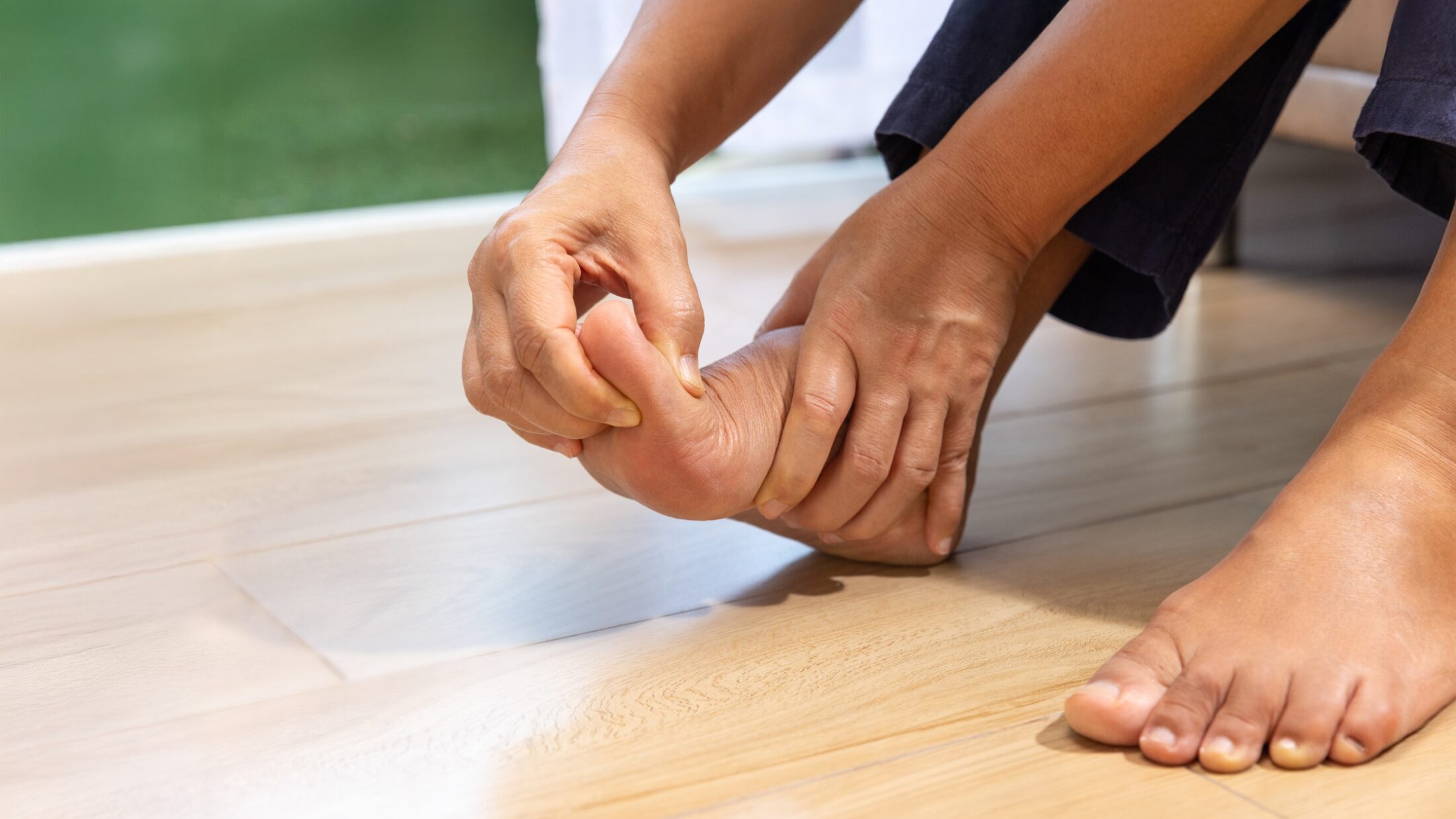Swelling, also known as edema, is a common condition characterized by the accumulation of excess fluid in the body’s tissues. It can occur in various parts of the body, most often in the legs, feet, and ankles. Swelling may arise from a variety of causes, including prolonged standing or sitting, injuries, pregnancy, or underlying health conditions such as lymphedema or venous insufficiency.
Occasional swelling may not seem alarming, persistent or severe swelling can impact mobility, comfort, and overall health. Left unchecked, swelling can lead to pain, reduced circulation, and even more serious health issues such as blood clots or skin ulcers. For this reason, proactive steps to reduce swelling are importannt, especially for individuals at higher risk.
What Causes Swelling
Swelling can affect any part of the body but is most commonly seen in the legs, ankles, and feet. Swelling may develop gradually or appear suddenly, depending on the underlying cause. It can result from a variety of factors, including issues with circulation, lifestyle habits, or health conditions. In some cases, swelling may be mild and temporary, while in others, it can signal a more serious medical concern requiring attention. Common causes include:
- Poor Circulation
When blood flow slows or becomes inefficient, fluid can accumulate in the lower extremities, leading to swelling in the legs, ankles, and feet. Poor circulation is common in individuals who remain sedentary for extended periods or have underlying vascular issues. - Injury or Trauma
Swelling is the body’s natural response to injury or trauma, such as sprains, fractures, or muscle tears. This type of swelling, often accompanied by pain and inflammation, is a protective mechanism to facilitate healing. - Medical Conditions
- Lymphedema: A condition characterized by the impaired drainage of lymphatic fluid, leading to chronic swelling in affected areas.
- Venous Insufficiency: Occurs when veins struggle to return blood to the heart, causing fluid to pool in the lower limbs.
- Pregnancy-Related Swelling
Hormonal changes and increased pressure on blood vessels during pregnancy can cause swelling, particularly in the legs, ankles, and feet. This is a common and often temporary condition that typically resolves after childbirth.
Swelling is often a symptom of an underlying issue rather than a standalone condition. Identifying the cause is important for determining the most effective treatment or management approach.
For example, compression socks can address swelling caused by poor circulation or venous insufficiency, but additional medical intervention may be required for more serious health conditions.
How Compression Socks Work to Reduce Swelling
Compression socks offer advantages for managing swelling and improving overall leg health. These specialized garments are designed to address both the symptoms and underlying causes of swelling, making them a versatile tool for individuals experiencing fluid retention, poor circulation, or chronic conditions.
By increasing the arterial pressure, compression socks help optimize blood flow and support the body’s natural ability to maintain healthy circulation.
Enhanced Circulation
Compression socks actively promote healthy circulation by applying graduated pressure to the legs, which is strongest at the ankle and gradually decreases as it moves upward. This helps push blood and fluids back toward the heart, counteracting the effects of gravity that can cause blood pooling and fluid buildup in the lower extremities. Improved circulation ensures that oxygen and nutrients are efficiently delivered to tissues while waste products are removed, fostering overall vascular health.
Reduced Discomfort and Pain
Swelling often leads to feelings of heaviness, tightness, or soreness in the legs, especially after long periods of standing, sitting, or physical exertion. By alleviating swelling, compression socks help reduce these symptoms, providing immediate relief from discomfort. This makes them an excellent option for individuals seeking a non-invasive way to reduce swelling and improve their daily comfort.
Prevention of Further Complications
One of the most significant benefits of compression socks is their role in preventing serious health complications. Poor circulation and prolonged swelling can increase the risk of blood clots, such as deep vein thrombosis (DVT), which can be life-threatening. Compression socks reduce this risk by supporting venous return and minimizing blood stagnation. They are particularly beneficial for individuals who are at higher risk, such as frequent travelers, those recovering from surgery, or individuals with chronic venous insufficiency.
The Science Behind Compression Socks
Compression socks rely on carefully designed pressure patterns to improve circulation and promote fluid movement. They are particularly effective because they address the physiological challenges posed by gravity and compromised vascular or lymphatic function.
Compression socks work through graduated compression technology, a design that applies the highest pressure at the narrowest part of the ankle and gradually reduces the pressure as the sock extends up the leg. This gradient pressure creates a “pumping effect,” which supports the movement of blood and lymphatic fluid upward toward the heart.
The compression is measured in millimeters of mercury (mmHg), and the level of pressure varies depending on the sock’s intended purpose:
- Light compression (8-15 mmHg): Suitable for daily wear and preventing mild swelling.
- Moderate compression (15-20 mmHg): Helps with minor circulation issues and provides support during activities like travel or pregnancy.
- Medical-grade compression (20-30 mmHg or higher): Designed for managing specific medical conditions under professional guidance.
Enhancing Circulation
By applying external pressure, compression socks assist in reducing the diameter of surface veins, which increases the velocity of blood flow. This prevents blood from stagnating in the veins, reducing the risk of fluid pooling in the lower extremities. The compression also encourages the valves in veins to function more effectively, pushing blood upward and minimizing backflow.
Additionally, compression socks:
- Facilitate oxygen and nutrient delivery to muscles by maintaining blood flow.
- Help prevent venous distension (stretching of vein walls), which can contribute to conditions like varicose veins and venous insufficiency.
Encouraging Fluid Movement
The lymphatic system influences fluid balance, transporting excess fluid and waste products away from tissues. When the lymphatic system is impaired, fluid accumulation can lead to swelling, particularly in conditions like lymphedema.
Compression socks gently compress the soft tissues, stimulating lymphatic vessels to move fluid out of the affected areas and back into the central circulatory system. This process helps reduce swelling, alleviate discomfort, and prevent complications such as skin changes or infections caused by chronic fluid retention.
Counteracting Effects of Gravity
When standing or sitting for prolonged periods, gravity naturally pulls blood and fluids downward, making it more challenging for the circulatory system to work against this force. Compression socks act as a countermeasure by creating an external framework that assists the body in fighting gravity. They provide structural support to the veins and muscles, ensuring consistent upward movement of fluids.
Benefits Beyond Swelling Reduction
The targeted pressure of compression socks has far-reaching benefits beyond managing swelling:
- Improve the efficiency of the circulatory system, reducing the workload on the heart.
- Help prevent the formation of blood clots, particularly in high-risk scenarios like long flights or post-surgery recovery.
- Reduce muscle soreness and fatigue by supporting the venous return and removing metabolic waste products from active muscles.
Compression socks are more than just a garment to reduce swelling; they are an tool for improving vascular and lymphatic health.
Choosing the Right Compression Socks
Selecting the right pair of compression socks is important for both effectiveness and comfort. The proper socks not only help reduce swelling but also support overall leg health by promoting circulation and preventing complications. Whether you’re looking for daily support, managing a medical condition, or seeking relief during physical activities, finding the perfect fit and style is vital for achieving the best results.
Compression Level
Compression socks come in varying levels of pressure, measured in millimeters of mercury (mmHg).
- Mild Compression (8-15 mmHg): Suitable for everyday use, such as reducing minor swelling or preventing fatigue.
- Moderate Compression (15-20 mmHg): Ideal for individuals with mild circulation issues, such as varicose veins or during pregnancy.
- Firm Compression (20-30 mmHg or higher): Recommended for managing medical conditions like lymphedema or chronic venous insufficiency, often under medical supervision.
Proper Sizing and Fit
The effectiveness of compression socks depends on a snug yet comfortable fit. Improperly sized socks may not provide adequate pressure or could feel restrictive. Measuring your leg circumference and length according to the manufacturer’s guidelines is essential for selecting the correct size.
Material and Comfort
Compression socks are available in a variety of materials, from breathable fabrics for everyday wear to moisture-wicking options for athletes. Choose a material that suits your lifestyle and preferences while ensuring durability and comfort.
Consulting with a Healthcare Professional
While compression socks are readily available and effective for a range of needs, consulting with a healthcare professional is important, particularly if you are managing a medical condition. Swelling caused by issues such as venous insufficiency, lymphedema, or other chronic conditions requires a tailored approach to ensure the best results.
A professional can assess your specific situation and recommend the appropriate compression level—whether mild, moderate, or firm—based on your medical history and symptoms. They can also help ensure the proper fit and sizing for maximizing effectiveness while avoiding discomfort or restricted circulation.
At Care-Med, we specialize in helping individuals find the perfect compression garments for their unique needs. Our personalized Compression Garment Fitting ensure that your compression socks or stockings provide the optimal level of support and comfort.
Who Can Benefit from Compression Socks
Compression socks are versatile and beneficial for a wide range of individuals. Whether managing a medical condition or seeking to improve overall leg health, they provide targeted relief and support in various situations.
Compression socks are particularly effective for individuals managing long-term health issues that affect circulation and cause swelling, such as:
- Venous Insufficiency: Helps reduce pooling of blood in the legs by supporting venous return to the heart.
- Varicose Veins: Minimizes discomfort and reduce swelling associated with enlarged veins.
- Lymphedema: Promotes lymphatic drainage to reduce swelling in affected areas.
Pregnant Individuals
During pregnancy, hormonal changes and increased pressure on blood vessels can lead to swelling in the legs, ankles, and feet. Compression socks provide gentle support to alleviate this discomfort and improve circulation, offering a safe and effective way to manage pregnancy-induced swelling.
Frequent Travelers
Long periods of sitting during flights or car rides can impair circulation, leading to swollen ankles and an increased risk of blood clots. Compression socks help travelers maintain proper blood flow, reduce swelling and minimize the risk of deep vein thrombosis (DVT) during extended journeys.
Athletes and Active Individuals
Athletes often use compression socks to aid in recovery and reduce post-exercise swelling. The improved circulation provided by these socks helps deliver oxygen to muscles, removes lactic acid buildup, and accelerates recovery times after intense physical activity.
Taking Steps to Reduce Swelling
Compression socks are a proven, effective solution for reducing swelling and improving leg health. By enhancing circulation, relieving discomfort, and preventing complications, they offer significant benefits to individuals with a variety of needs, from managing chronic conditions to supporting an active lifestyle.
Taking proactive steps to address swelling not only improves daily comfort but also contributes to long-term health and mobility. Whether you’re experiencing occasional swelling or dealing with a chronic condition, incorporating compression socks into your routine is a simple and impactful way to prioritize your well-being. Start today and experience the difference compression socks can make in your life.
Share This Story, Choose Your Platform!
Table of Contents
We specialize in orthotics, body braces, and compression wear tailored to your unique needs in Toronto. Reach out to us at info@caremed.care or call 416-782-5353 to book your fitting and consultation.
Experience the difference of customized solutions designed just for you.











